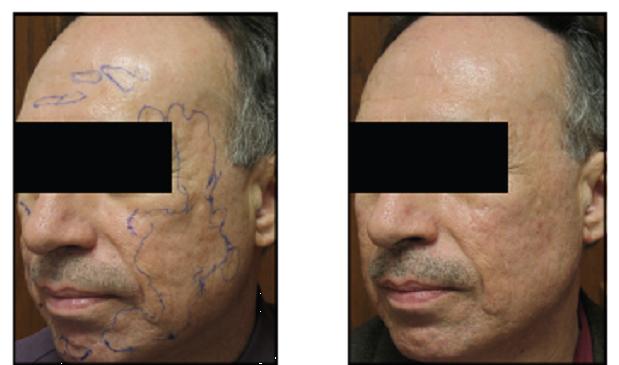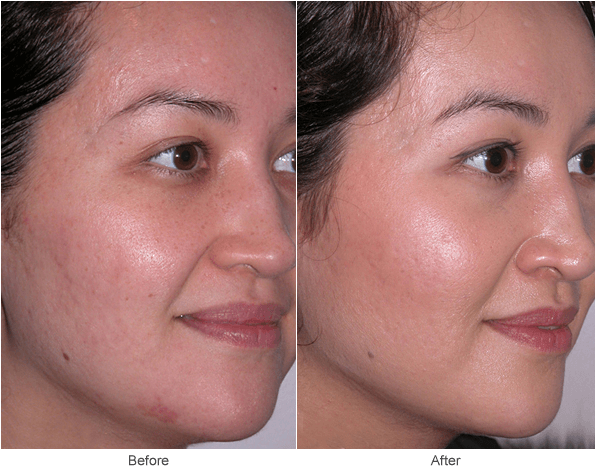Acne and Acne Scars Treatment: Expert Solutions for Lasting Outcomes
Acne and Acne Scars Treatment: Expert Solutions for Lasting Outcomes
Blog Article
Recognizing the Numerous Skin Conditions and Reliable Treatment Options for Acne Marks
Acne scars stand for a complex interaction of skin problems that considerably effect individuals' self-confidence and total skin wellness. Understanding the distinct types of acne scars-- atrophic and hypertrophic-- along with their underlying reasons, is critical for establishing efficient treatment techniques. Various healing choices exist, varying from advanced skin-related treatments to all-natural treatments. Nevertheless, the efficiency of these treatments usually depends upon personalized evaluations by qualified experts. As we discover the landscape of acne scar monitoring, it comes to be evident that the trip towards clearer skin might involve greater than just topical options.
Kinds Of Acne Marks

In comparison, hypertrophic scars arise from an overproduction of collagen throughout the healing procedure, leading to increased areas on the skin. These scars are commonly firm and can differ in color, occasionally appearing red or darker than the surrounding skin.
Comprehending these sorts of acne marks is important for creating an effective treatment plan - acne scars. Options may consist of chemical peels, laser treatment, microneedling, or facial fillers, customized to the specific mark type. An extensive consultation with a dermatologist can assist identify the most ideal treatment, considering the person's skin kind, scar intensity, and overall skin health and wellness
Sources Of Acne Scarring
Marking takes place as a result of the body's natural recovery feedback to inflammation and injury triggered by acne lesions. When acne types, it triggers an inflammatory reaction, bring about the release of various cytokines and growth factors that advertise recovery. This procedure can occasionally lead to excessive tissue formation or inadequate repair work, resulting in marks.
The key reasons for acne scarring include the severity of the acne itself, period of the lesions, and individual skin kinds. Severe inflammatory acne, such as cysts and blemishes, is more likely to cause scarring due to much deeper cells damage. Additionally, improper handling of acne lesions, such as picking or squeezing, can intensify tissue injury and inflammation, boosting the likelihood of scarring.
Hereditary tendency additionally plays a significant function; individuals with a household history of scarring are at a higher danger. Moreover, skin kind and shade can affect mark development, as darker complexion may experience post-inflammatory hyperpigmentation, while lighter skin might develop atrophic marks.
Ultimately, recognizing these reasons is vital in handling acne and reducing the capacity for scarring.

Treatment Options for Scarring
Reliable therapy options for acne scarring vary relying on the type and extent of the scars. Typically classified into atrophic, hypertrophic, and keloid marks, these conditions call for customized techniques for optimum outcomes.
For atrophic scars, which are defined by a loss of tissue, treatments such as chemical peels, microdermabrasion, and laser treatment are frequently utilized. These techniques advertise skin revival and stimulate collagen production, therefore enhancing skin texture. Subcision, a minimally intrusive treatment, can additionally work by damaging up coarse bands under the skin.
Keloid and hypertrophic marks can be a lot more testing to treat. Alternatives include corticosteroid injections to minimize swelling and flatten the marks. In some cases, cryotherapy or laser therapy might be recommended to lessen their look.
Surgical options are available for severe scarring, where excision or skin grafting may be necessary. It's vital for individuals this to speak with a dermatologist to examine their certain scar kind and talk about one of the most ideal therapy strategy. Integrating numerous treatments usually yields the very best results, making sure that each patient's special skin problem is attended to successfully.
Home Solutions and All-natural Solutions
All-natural solutions and natural home remedy can give an easily accessible approach for people seeking to improve the appearance of acne marks (acne and acne scars treatment). Different active ingredients discovered in the home kitchen area have shown possible advantages in boosting skin texture and promoting healing

One more effective alternative is lemon juice, which works as a natural exfoliant and can lighten hyperpigmentation. It must be utilized cautiously, as it may create photosensitivity. Oatmeal masks are also helpful; their mild peeling can help eliminate dead skin cells while relaxing inflammation.
Crucial oils, such as tea tree oil and lavender oil, can even more support mark healing as a result of their antimicrobial buildings. It is critical to perform a spot examination before applying any type of solution to ensure there are no unfavorable responses. These natural options can be a complementary technique in the journey to diminish acne scars.
Protecting Against Future Scarring
Embracing a positive method to skin care can substantially lower the risk of creating future acne scars. Regular cleansing, exfoliation, and hydration can help keep skin health and wellness and avoid blocked pores.
Furthermore, avoiding the temptation to press or pick acne lesions is important, as this can cause swelling and succeeding scarring. Rather, people need to concentrate on applying topical treatments that promote healing and minimize inflammation. Components such as salicylic acid, benzoyl peroxide, and retinoids are understood for their efficacy in handling acne and decreasing scars.
Sunlight protection is an additional essential component; direct exposure to UV rays can darken marks and impede recovery. Consequently, making use of a broad-spectrum sun block daily can have a peek at this site mitigate these effects - acne scars.
Lastly, preserving a healthy diet plan rich in antioxidants and staying moisturized assistances skin regrowth. By executing these precautionary measures, people can significantly lower their danger of future scarring and promote general skin health.
Final Thought
In verdict, a thorough understanding of acne scars, encompassing both my response atrophic and hypertrophic types, is vital for reliable treatment strategies. Assessment with a dermatologist remains essential to devise customized approaches that consider individual skin kinds and scar extent, eventually improving the efficacy of mark management techniques.
Acne marks represent a complex interplay of skin problems that dramatically effect individuals' self-esteem and general skin wellness. The two main groups of acne scars are hypertrophic and atrophic scars. These marks are more categorized into 3 subtypes: ice pick scars, which are deep and slim; boxcar scars, which are broader and have distinct sides; and rolling scars, which develop a wave-like look due to uneven skin appearance.
A complete consultation with a skin specialist can help identify the most appropriate treatment, taking right into account the individual's skin kind, scar extent, and general skin health.
Appointment with a dermatologist remains imperative to design personalized methods that consider specific skin types and scar seriousness, ultimately enhancing the effectiveness of scar administration techniques.
Report this page